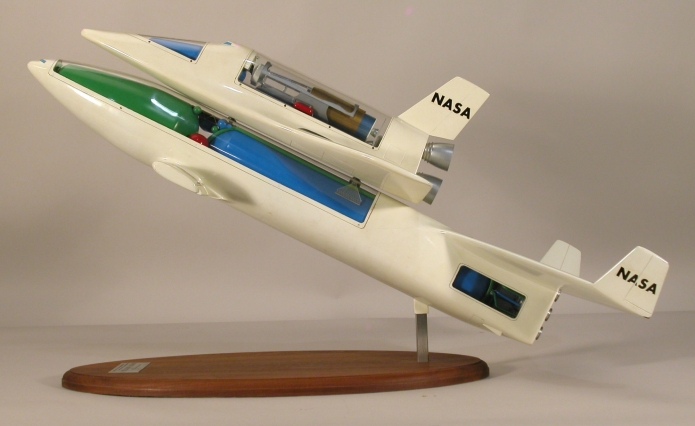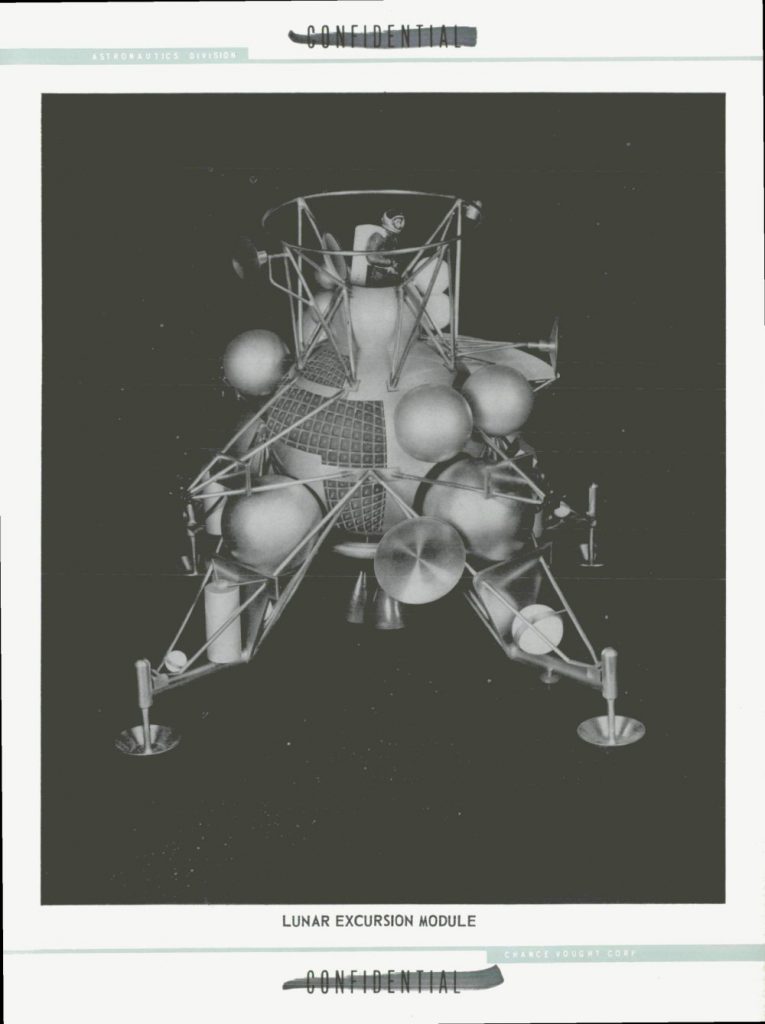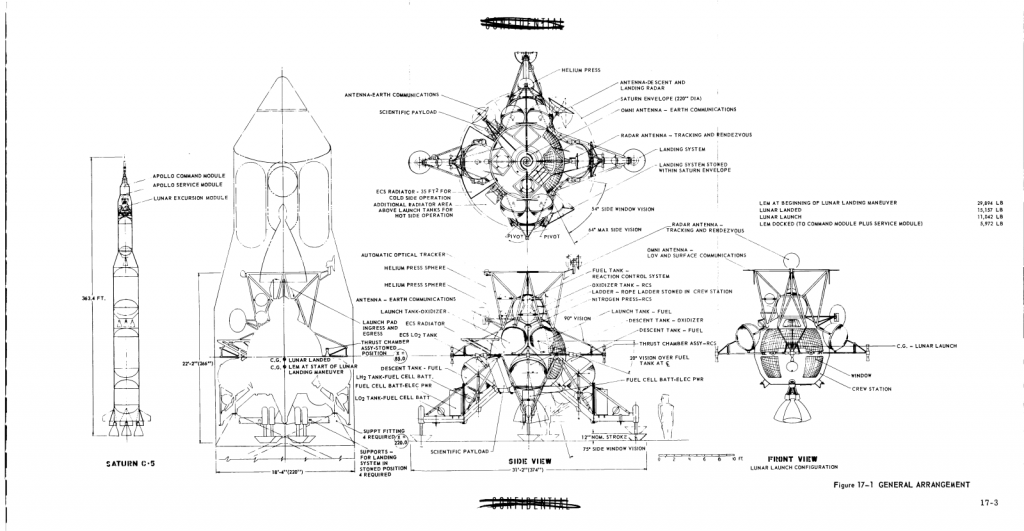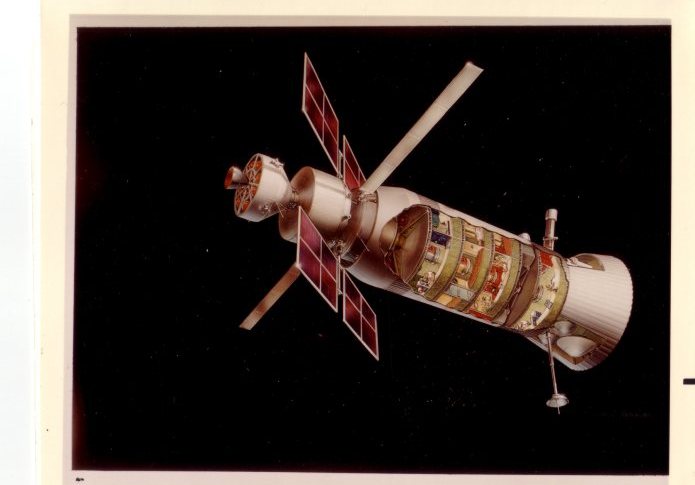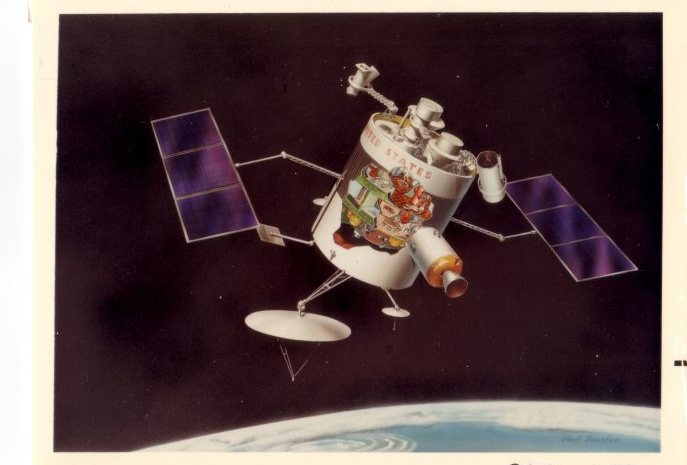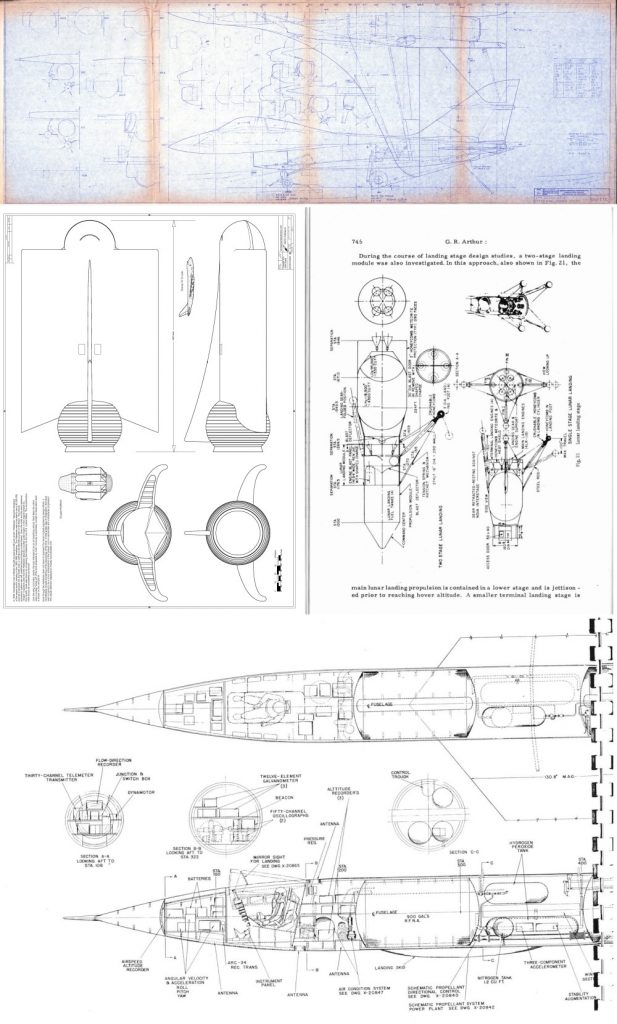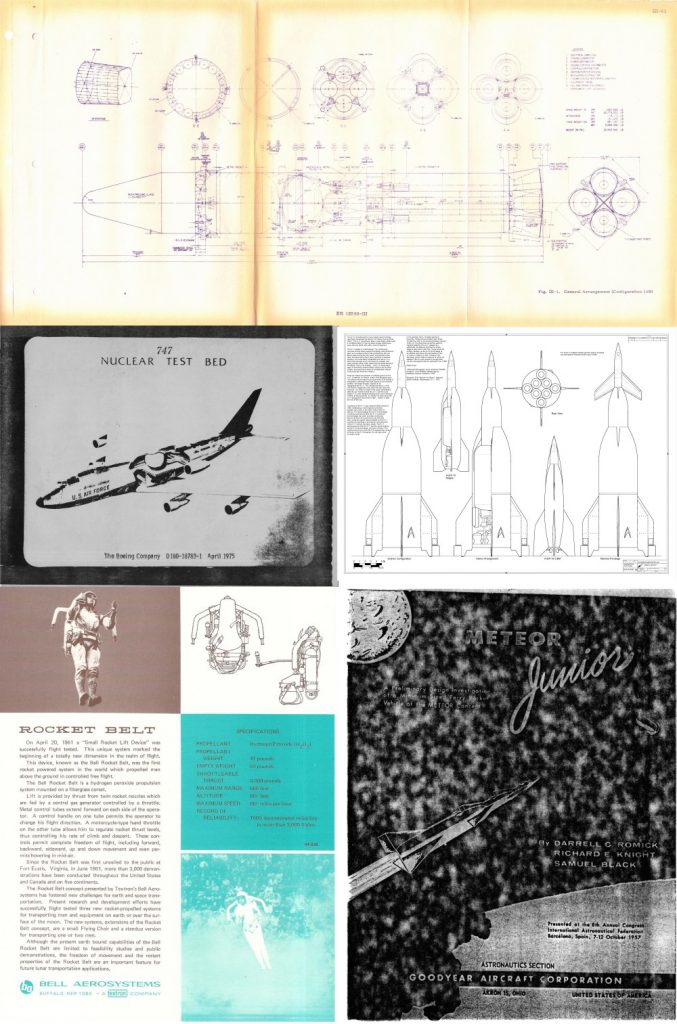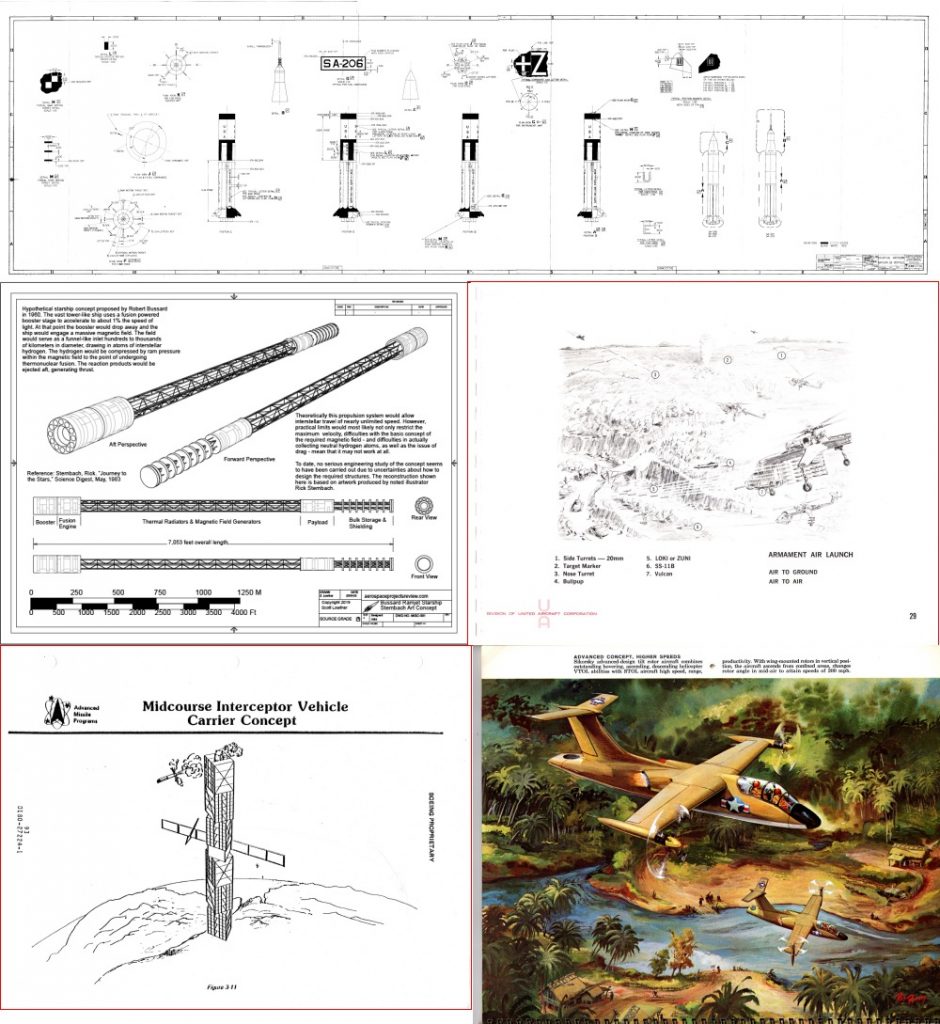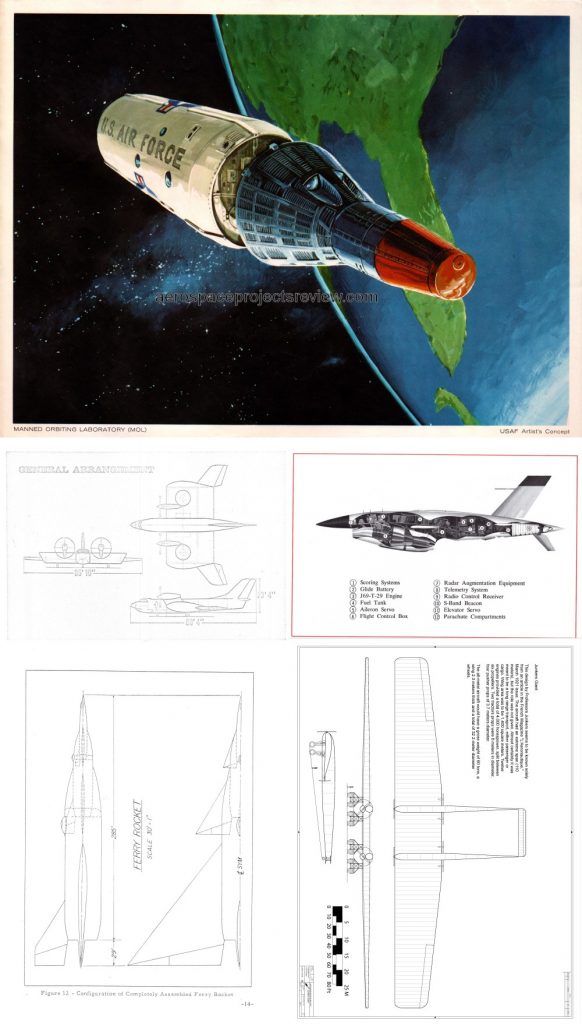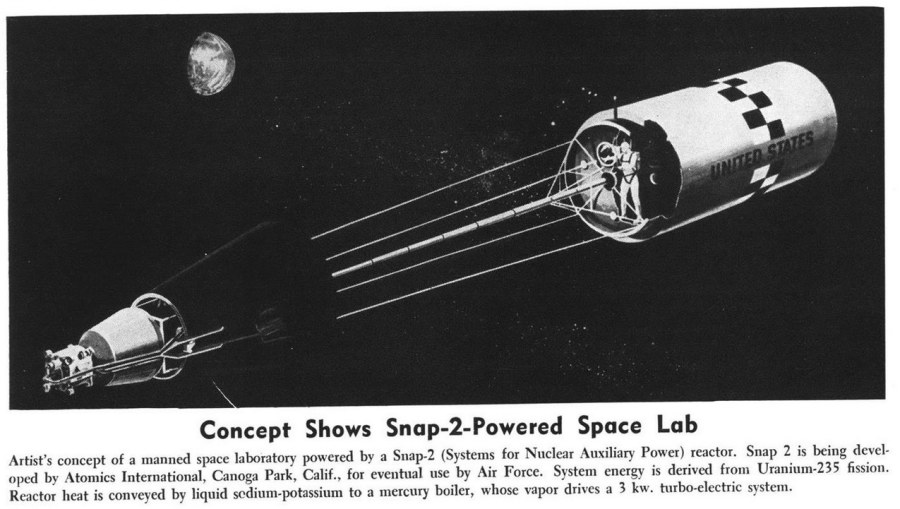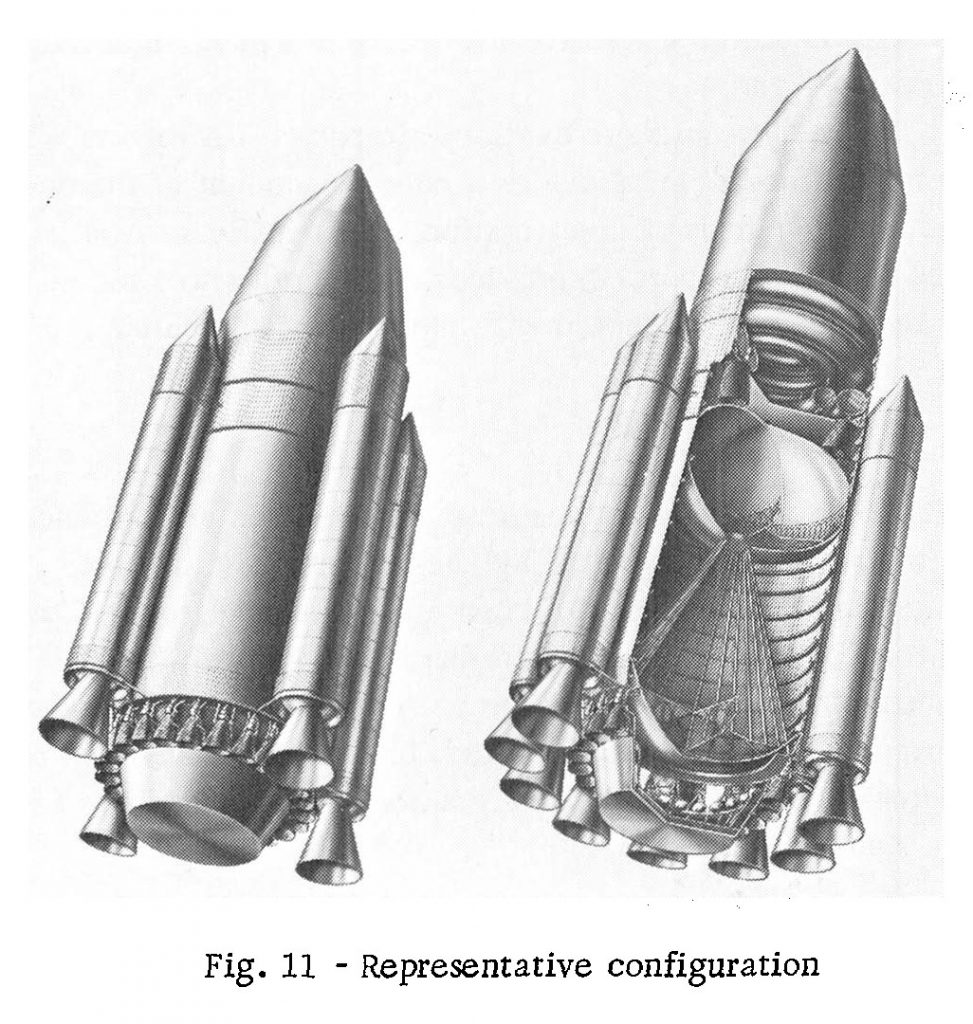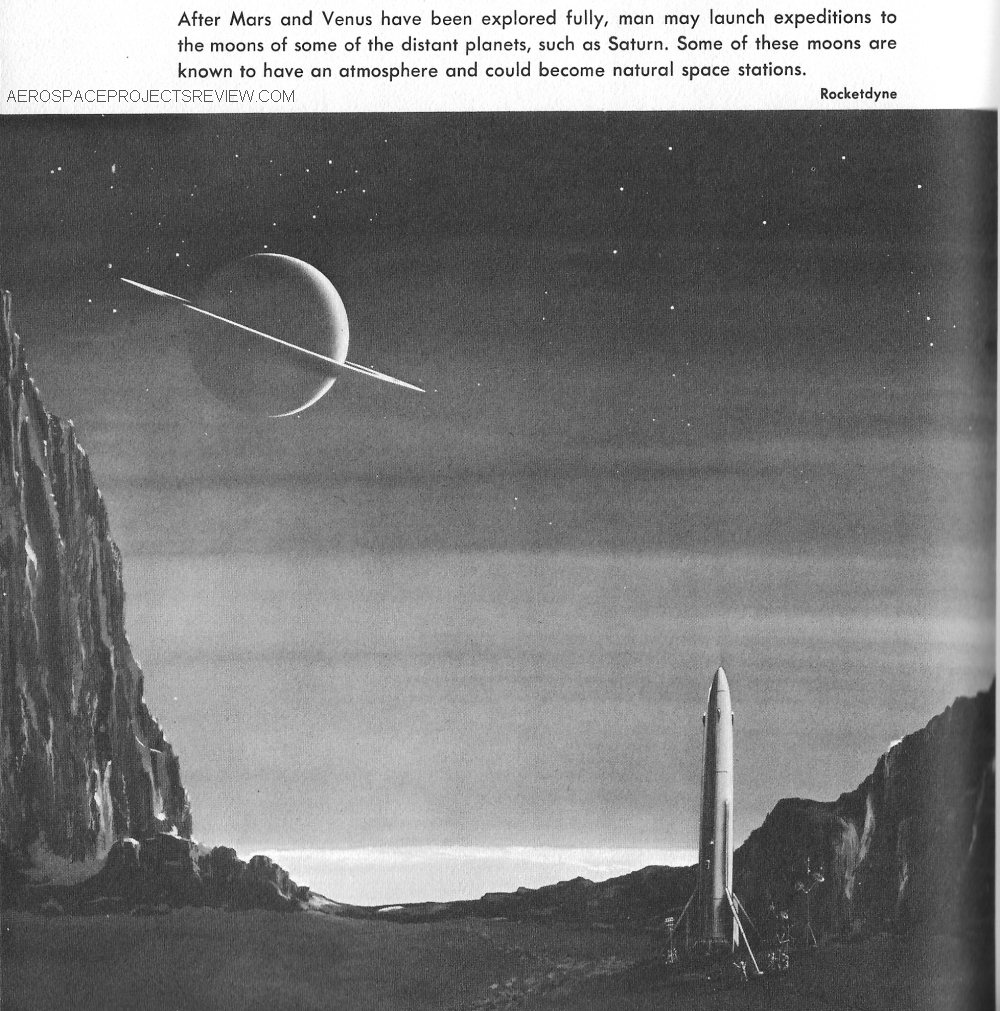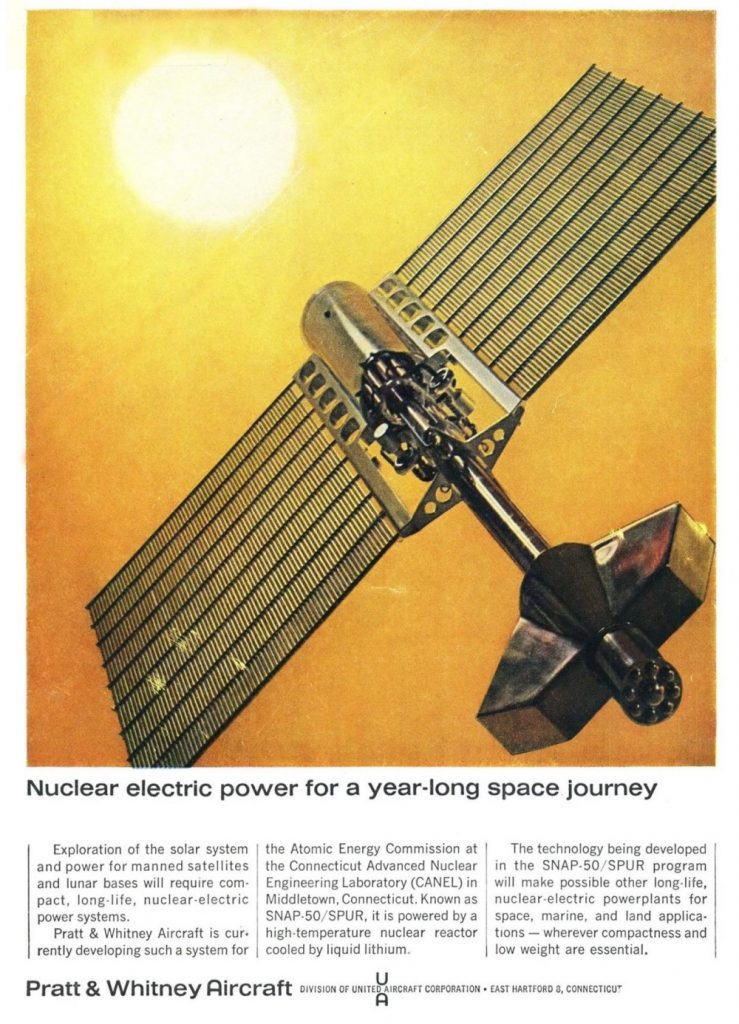For much of the time while the concept of the Space Shuttle was being developed the vehicle consisted of a manned flyback booster of relatively enormous dimensions, coupled with an orbiter that included sizable internal oxygen tanks, sometimes with external hydrogen tanks, sometimes internal. The model below, a masterpiece of late 1960’s model makers craft, illustrates one such concept. the orbiter is similar to the Grumman H-33 except larger, with completely internal hydrogen and oxygen tanks.
Had this type of Space Shuttle been built and flown successfully, there is every chance that it would have been substantially less costly to operate than the Shuttle we got: flying the booster back to a runway landing and refurbishing it would theoretically have been a lot faster and easier than fishing solid rocket motor casings out of the ocean and shipping them to Utah for refurb. But getting the design to the point of operation would have been a nightmare. The booster was unlike anything previously attempted, and would have been an aircraft roughly the size of the C-5 Galaxy, with a top speed like that of the X-15
I have uploaded the full resolution scan of the photo to the 2019-07 APR Extras Dropbox folder, available to $4 and up subscribers to the APR Monthly Historical Documents Program.
